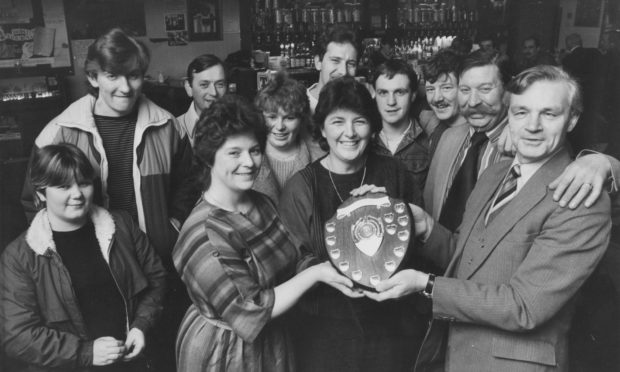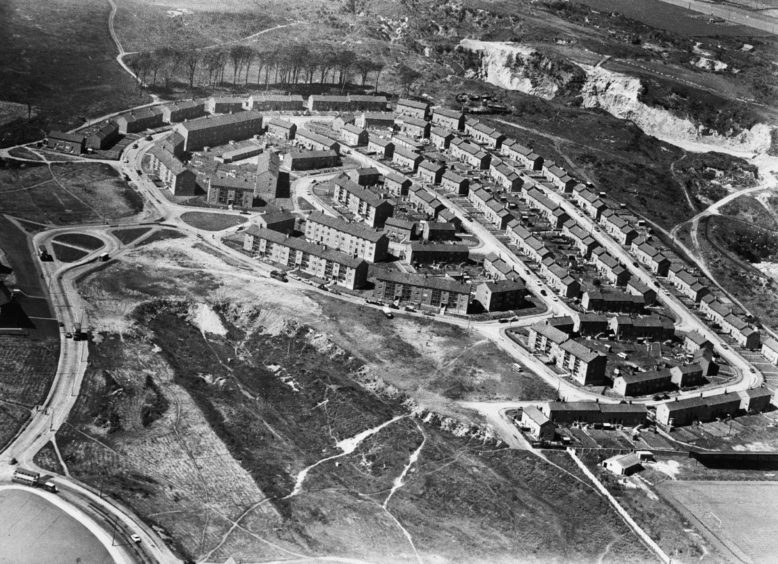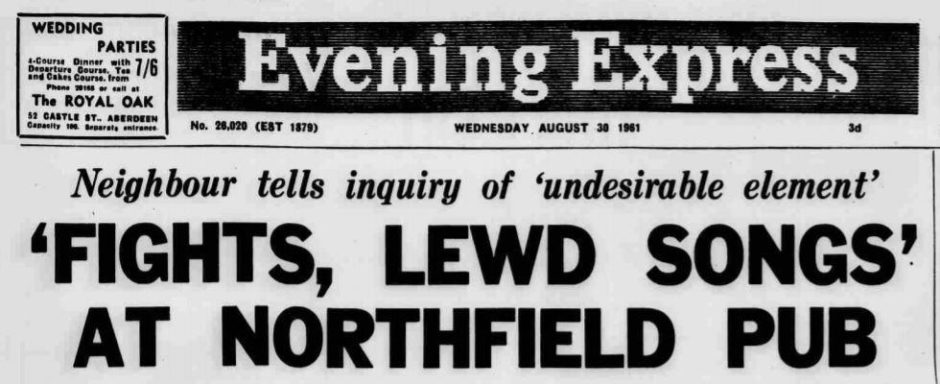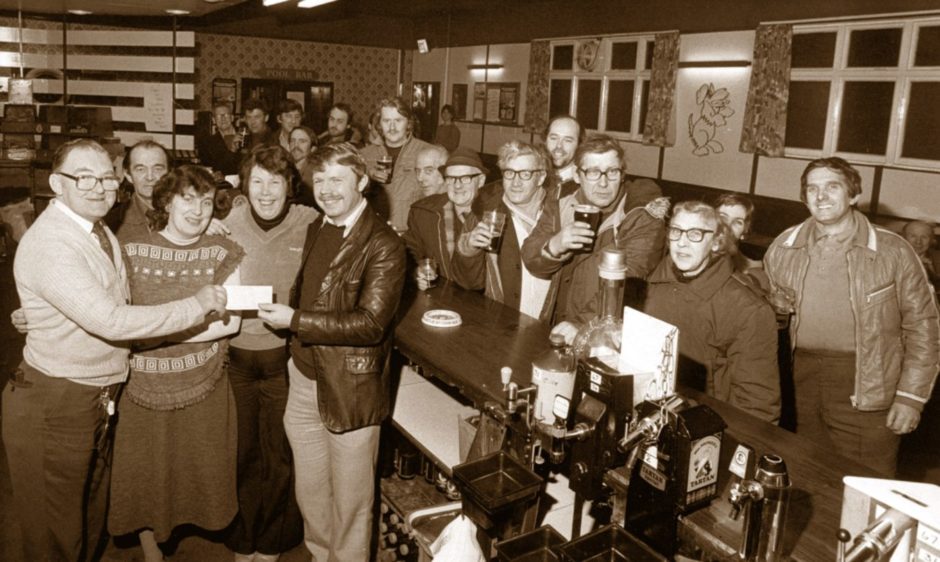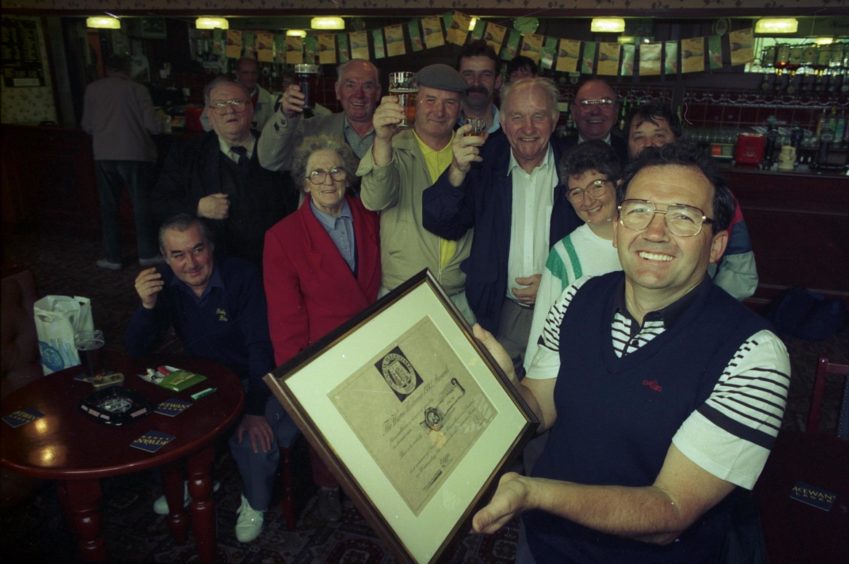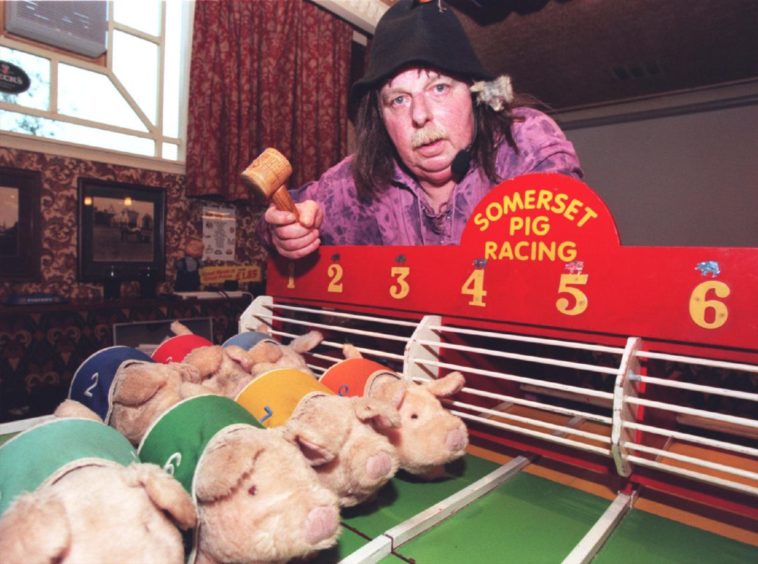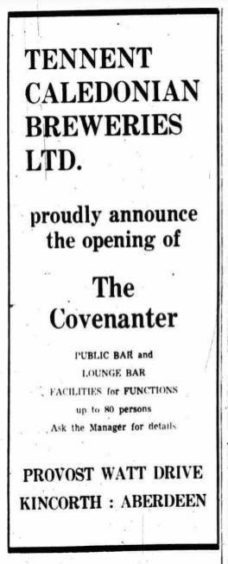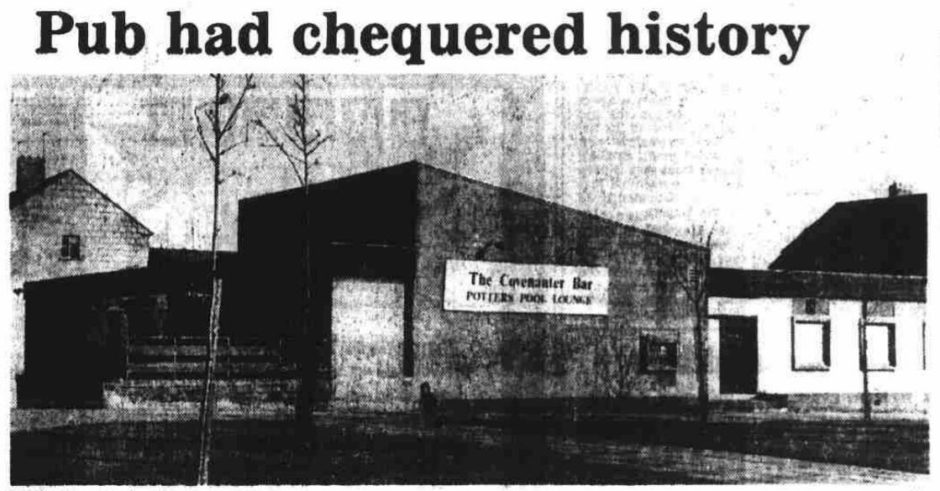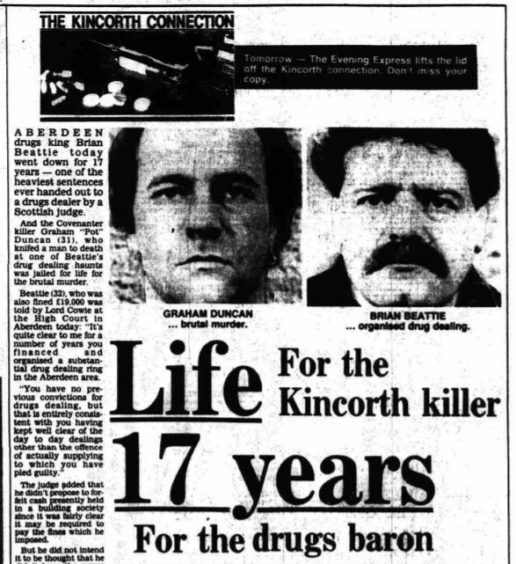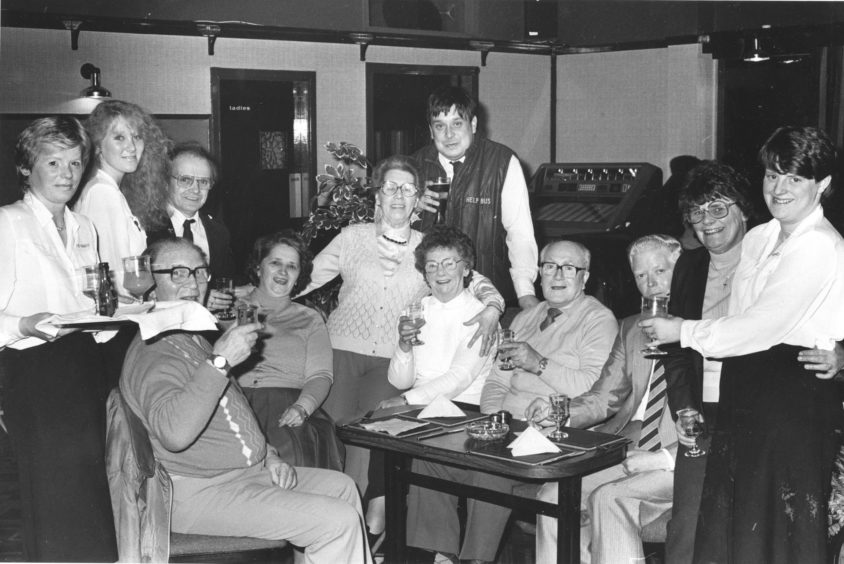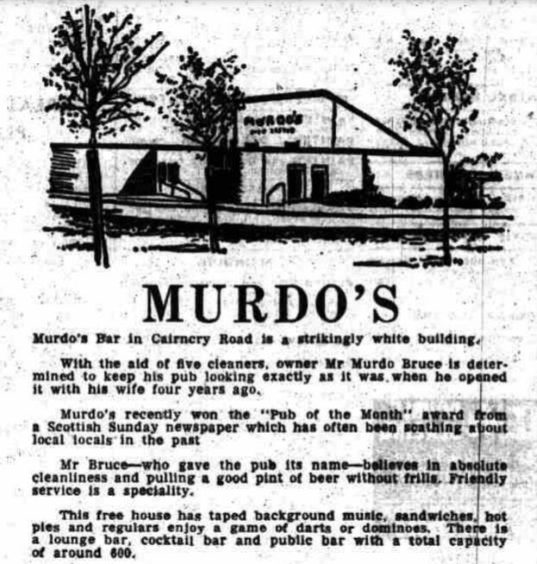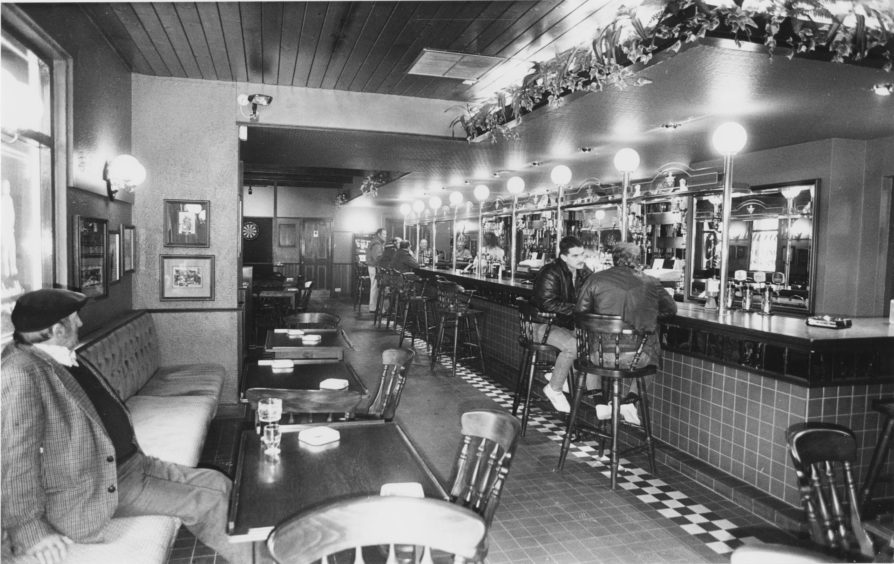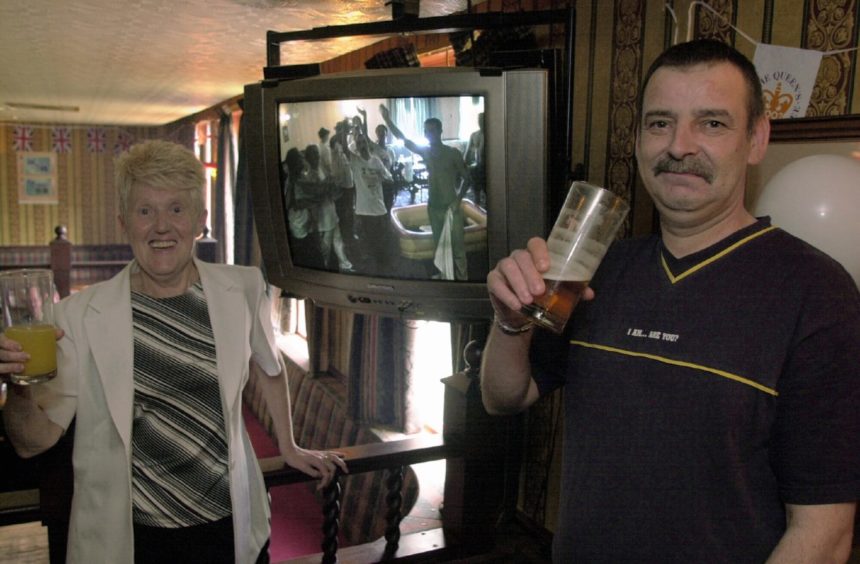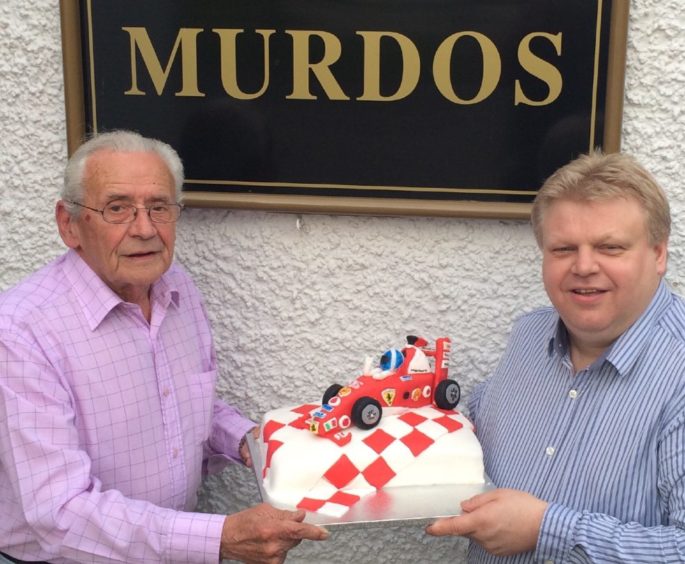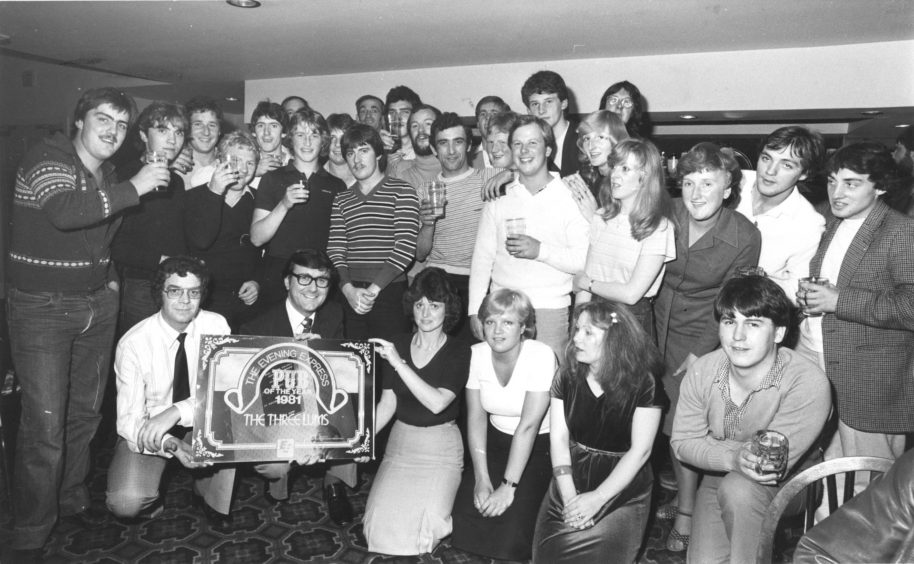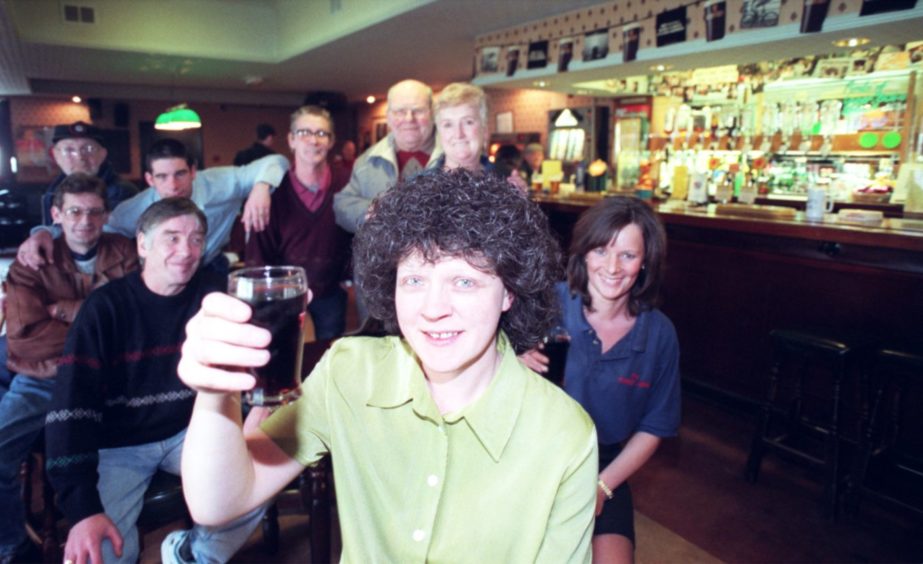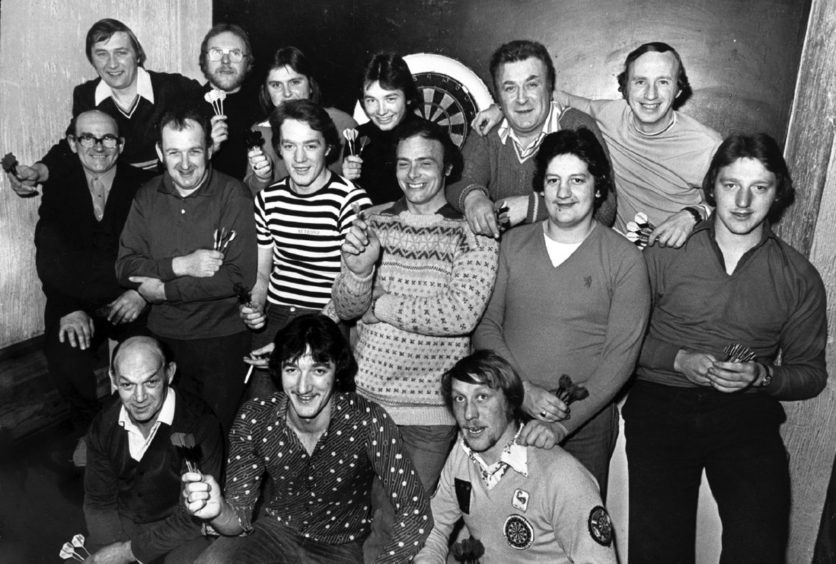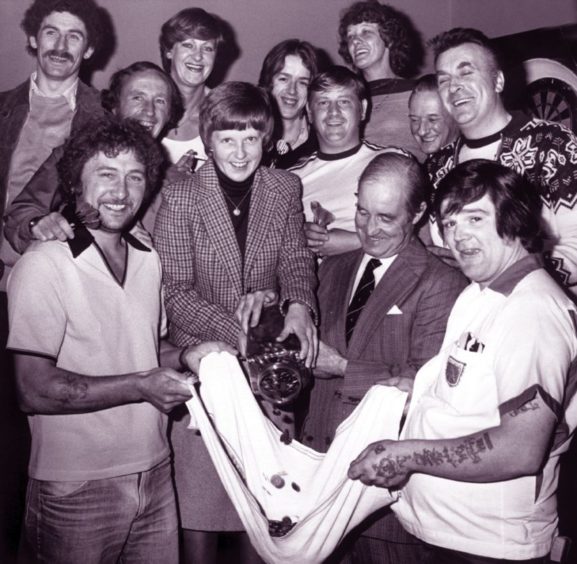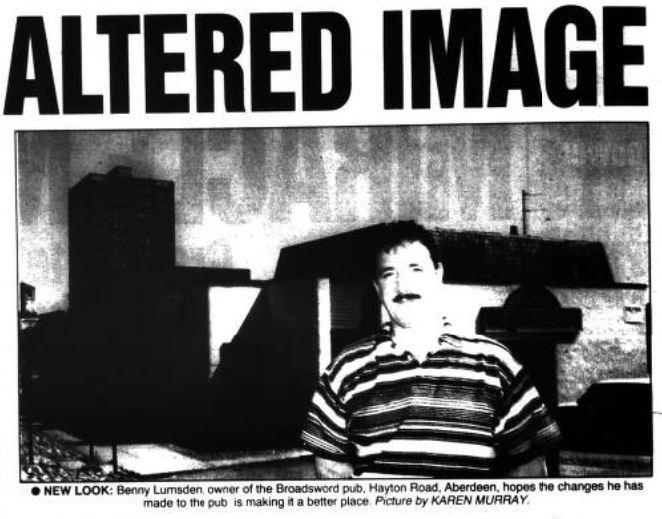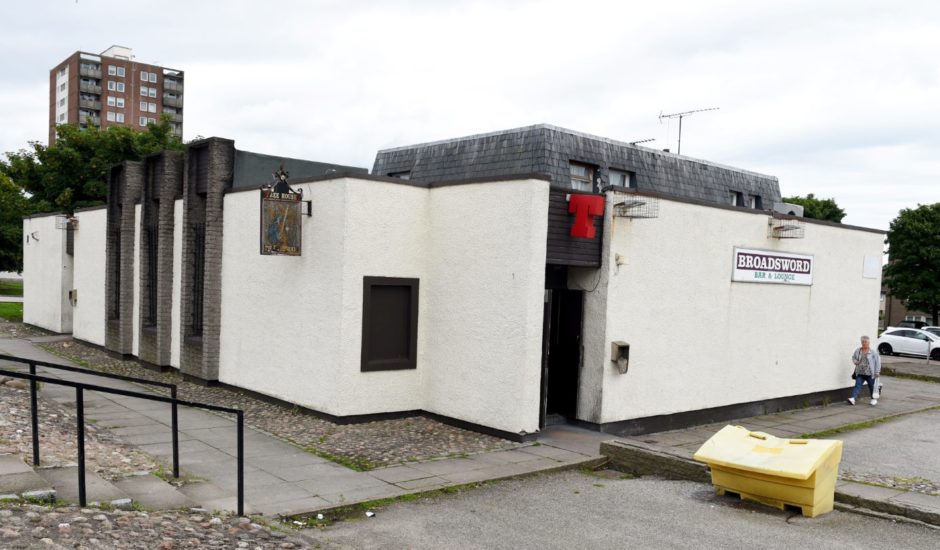Local pubs were a beating heart in Aberdeen’s new housing estates when they sprung up on the outskirts of the city in the 1950s and 60s.
These housing scheme pubs were so much more than a place to enjoy a pint – they fostered thriving communities and brought new neighbours and strangers together.
With pool and darts leagues, quizzes, live music and charity events – and sometimes the odd ruckus – these bars have been lively social hubs for decades.
Nothing beats that first pint at your favourite boozer, and following lockdown and enforced isolation, many Aberdonians will be keen to support their local when they reopen this week.
Here we celebrate the ups and downs of some of these estate pubs, those that hit the headlines and the bars that called last orders many years ago.
The Dancing Cairns, Northfield
The tone was set early for this notorious Marchburn Drive venue when its stair runner carpet was stolen on the opening night.
Named after the disused Dancing Cairns Quarry nearby, the pub opened in the 1950s and quickly became a riotous establishment.
Although a popular place, nearby residents claimed the opening of its Heather Cairns function suite in 1958 brought a rise in undesirable behaviour.
A planning inquiry in 1961 heard complaints from neighbours who claimed lewd songs “that would be tolerated in the army” kept them awake on Saturday nights.
While another was fed up of fighting – highlighting one occasion where a woman was striking a man with her handbag.
But punters loved the rowdy atmosphere and will have fond memories of two of its proprietors Bert and Margaret Barclay – and their dog that also frequented the bar.
When Mr Barclay passed away suddenly in 1984, his son Graeme took over.
And although the bar had many encounters with the long arm of the law, with break-ins, scrapping and unruly behaviour, it retained a true sense of community.
In 1985 it hosted a petition to have popular policeman Tony Fraser’s Northfield beat reinstated after he was transferred to Garthdee.
At the time, bar manager Graeme said he was a “well-liked” local bobby and popular regular, who was honest and fair.
The pub closed down in the mid-90s and in 1996 was set on fire, a care home now stands in its place.
Gray’s Inn, Mastrick
A true community pub, Gray’s Inn was opened beside the shops on Greenfern Road in the 1960s by proprietor George Gray.
At the time, he said he wanted it to become a favourite meeting place in the neighbourhood, and it has remained a popular spot.
As well as hosting a number of music nights over the years – from rock’n’roll to country and Aberdeen bands – the local has also been involved in lots of fundraising.
It has made the papers many times over the years for wacky events including asking locals to don flares and gaudy shirts for a 70s Revival Roadshow in 1998.
And in 1999, the pioneering pub was the first in Scotland to have a digital jukebox installed, and the first in Aberdeen to host a pig racing night – with battery-operated oinkers.
The pub’s place in the heart of Mastrick was recognised in 1993 when it won a customer care award, and again in 2011 when it won Community Pub of the Year at the Publican Awards.
The Abbot Bar, Kincorth
Opening in 1971 as the Covenanter, the pub’s name was inspired by the Covenanters and the Battle of the Brig of Dee in 1639, and was the only pub on the large Kincorth estate.
Popular with locals who enjoyed a quiet drink, punters also helped raise funds for good causes in the local community.
But the bar on Provost Watt Drive made history itself when it became the centre of one of Aberdeen’s biggest drugs and murder trials.
Operated by brewers Tennant Caledonian, the bar was designed to have a “time gone by” feel, and featured a large mural of a pre-battle scene.
Visitors in the early days might recall walls adorned with coats of arms associated with the Covenanter period, as well as axes, swords and banners.
Perhaps the combative decor was an omen, because in 1978, the pub’s car park became the scene of the so-called Kincorth Riot when police officers were injured in a clash with 15 youths and men.
Trouble had flared after Scotland were beaten by Peru in a World Cup football match.
One of the young men involved was 25-year-old Brian Beattie, whose name would become synonymous with the Covenanter.
In 1985, Beattie began to use the bar as a base for selling heroin; Aberdeen was flush with oil money and his business was lucrative.
By mid-December that year, festivities were in full swing with a programme of events at the pub and community Christmas parties booked in.
But amid all the bright Christmas lights, a darker underworld was at play. It all came to a head on December 21 when regular George Ritchie was enjoying a quiet pint with his wife in the pool room.
Horrified by the blight of drugs in the close-knit community, Mr Ritchie had previously stood up to Beattie.
It was a move that would cost him his life because on that night, just days before Christmas, spotting him in the bar, Beattie drew a carving knife from his jacket and attacked Mr Ritchie.
The horrific muder saw the pub closed on Hogmanay and the licence was suspended for six months.
After Beattie was convicted and jailed, the true extent of the heroin empire in Kincorth was revealed.
But locals missed their pub, which had also been an unfortunate victim of Beattie’s scheming, and a petition to reopen it attracted 500 signatures.
In an attempt to shake off its notoriety, the venue reopened as The Abbot after undergoing a redesign to create separate entrances to the bar and lounge.
Meanwhile the pool room became a community room which was used as a meeting place for mothers and babies, and for fundraising functions.
Murdo’s, Cornhill
A striking white building in Cairncry Road, Murdo’s curved exterior has an almost Art Deco charm – but it actually opened in 1972.
It quickly attracted a loyal clientele, something owner Murdo Bruce attributed to “cleanliness and pulling a good pint of beer without frills”.
With a capacity of 600, this busy local boasted a lounge bar, public bar and a cocktail bar when it opened, and hosted darts teams and dominoes.
The generous proprietors gave all their pensioner regulars a free bottle of whisky or rum for Christmas in 1975 – as well as drinks on the house for two hours.
And in 1994, the pub nipped ahead of others in the city when it was the first to bring in metric to meet new European standards.
Traditional one-sixth gills for spirits were replaced with larger 25ml measures, which saw a price rise of 6p.
No stranger to charity work, the pub took inspiration from noughties TV sensation Big Brother to raise funds for Cash for Kids in 2002.
In a potentially chaotic stunt, regulars and bar staff volunteered to be locked in a back room from 11am to 11pm with a camera filming their every move – broadcasting it in the bar next door.
They screamed for more drink, splashed about in the paddling pool and slagged each other off in the ‘diary room’ – but raised £1,100 in the process.
And one gentleman who would have had seen some sights over the years was Johnnie Crichton, who at the age of 82 in 2014, marked 25 years of working at Murdo’s.
An institution at the boozer, he was still working from 9am to 5pm every weekend and reckoned he’d clocked up 9,132 shifts over the years.
His colleagues threw him a surprise party to celebrate the remarkable feat, with a racing car cake to reflect his other passion – Formula 1.
Three Lums, Sheddocksley
It didn’t take long for the Three Lums on Lewis Road to become a warm and welcoming local with a hard core of regulars and neighbours.
Just months after it opened in 1981, it was three cheers for the Three Lums when it was crowned Pub of the Year by the Evening Express.
It was the only bar in Aberdeen at the time serving seven days a week, with meals costing as little as £1.70.
While the mixed clientele aged from 18 to 80 enjoyed the use of three pool tables and two dart boards.
The venue was also praised for having a dedicated disabled toilet, having its own darts and football teams, and hosting the Three Lums Cup in Aberdeen’s Pool League.
One punter Gary Keith said: “There’s a good crowd comes in here. It really is a regular local.”
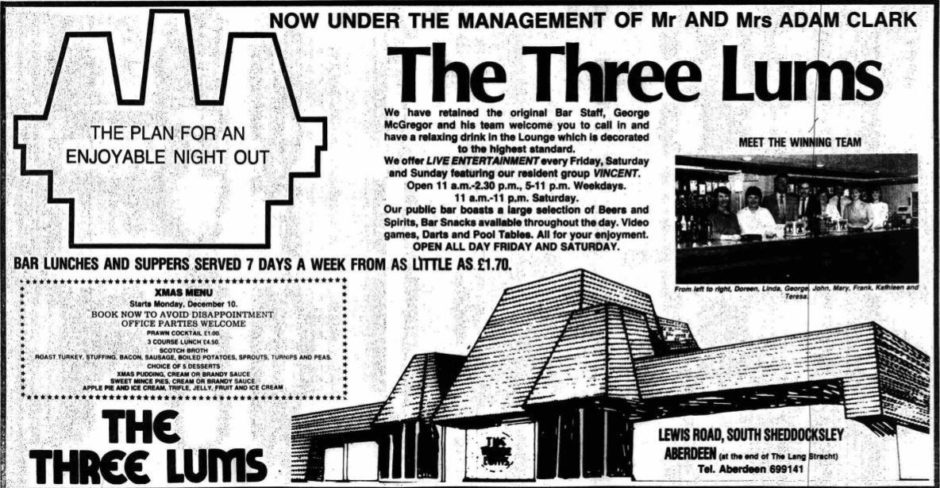
The pub was taken over by new proprietors Adam and Linda Clark in 1984, who said the locals helped create “a tremendous atmosphere” and that it was like “one big happy family”.
As well as raising glasses, regulars also raised funds for charity, and in 1992 helped to buy a local mum a new wheelchair.
The Three Lums was one of three runners-up in the Scottish Community Pub of the Year awards in 1998 after being nominated for rallying around its local community.
Projects it was recognised for included sending the local boys’ football team to England to compete, raising money for cancer facilities at Aberdeen Royal Infirmary, and treating local pensioners at Christmas.
Broadsword Bar, Tillydrone
The Broadsword had a reputation for being one of the city’s roughest pubs, earned through its links with drugs, assaults and murder.
When it opened in 1968, it was billed as being “a cut above the rest” – a slogan that would come back to haunt it when it was the scene of a stabbing in 2015.
A focal point within the new housing estate in Tillydrone, the Hayton Road pub had a successful darts team, hosted music nights, talent contests and its regulars raised thousands for charity.
But over the years, the pub became better known for fights and criminal activity, and its takings were regularly targeted in break-ins.
It hit the headlines in 1980 after a man glassed his love rival in the face, resulting in him needing 40 stitches. And again a few years later when the manager, manageress and two policemen were assaulted in a fracas.
In 1989, the bar was also the scene of a bomb scare when police were told a device had been hidden inside. The pub was cleared, but there was no bomb.
When the Broadsword was taken over by Benny Lumsden in 1996 he was determined to restore the community spirit and turn the place around.
Describing it as being like “the Black Hole of Calcutta” when he took it on, Benny oversaw a complete refurbishment to give the Broadsword a fresh start, hoping to make it the social hub it had been in the 1960s.
His “no-nonsense” approach to bad behaviour was welcomed by regulars who had been driven away by drug dealing, with one commenting the bar was “back on its feet again”.
The bar continued to have a loyal core of customers and maintained its place in the heart of Tillydrone, but troubled returned in 2015 when a man, his wife and daughter were stabbed following a charity function.
There was sadness when the Broadsword closed for the final time in 2017, and proprietor Bob McGuire who had co-owned it for 20 years said it was “a community bar in the truest sense of the word. Some of the people there would have been second or third generation customers”.
Rising prices had been cited as the reason to bring the shutters down for good.
Beer gardens near me: Interactive map shows the pubs reopening in Aberdeen and Aberdeenshire
